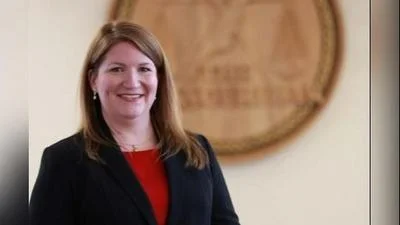Business Etiquette | Mikhail Nilov (Pexels)
Business Etiquette | Mikhail Nilov (Pexels)
Communication is teeming with choices. What should I say? How should I say it? When? Is it appropriate to include emojis? Could I do this over a virtual platform or is face-to-face preferable?
These choices are central to the fourth edition of “The Communication Age: Connecting and Engaging,” written by Dr. Shawn Wahl, dean of the Reynolds College of Arts and Letters at Missouri State University.
As a professor of communication, he considers a balanced approach between technology and face-to-face best.
“What we try to do is to get our reader to think about how a communication choice will impact the context or the overall communication,” Wahl said.
In the example of online dating, he said, you can spend all day sending short messages and building engagement with someone. But how would you feel if the person on the other end never made any overture to meet in person and spend quality time together?
In his professional life, Wahl strives to meet face-to-face with those who report to him at the university.
“We can have coffee and share information, and it can be 95% business. But if someone wants to share something about a sick relative, it’s appropriate in that setting, too,” he said.
Wahl refers to a recent article in Inc. Magazine that shared data about improving relationships between supervisors and direct reports.
“Spending quality time with them in person makes them feel more comfortable in the workplace. It alleviates anxiety, and it can help tackle turnover in roles.”
Engaging and disconnecting
Wahl works with his co-authors to continually assess the field through a futurist mindset.
This is aided by a research lab led by two of his co-authors from Western Michigan University. They employ drones, artificial intelligence and other robotics to test theories about the evolution of communication.
With the incorporation of technology into so much of communication, Wahl and his collaborators write about engaging with people while disconnecting from devices.
“We’re constantly on the screen with our phones, tablets and desktop computers. In addition to work, we also use them to stay connected with the people we love or with people we’re trying to develop new relationships,” Wahl said.
“There’s definitely a bright side and a dark side. What is the quality of in-person relationships? And what about that physical community?”
Anonymous citizen
Another idea the book investigates is the tension of public vs. private personas, and what Wahl calls the anonymous citizen.
“There’s a safety in that anonymity that can embolden people, and that can be positive where someone doesn’t have to expose their identity in something like a forum,” he said. “On the other hand, we have people who hide behind the screen.”
He argues though that the anonymous citizen also has other drawbacks. For example, when collecting data.
“It’s nice to have a poll to see how people feel about an issue, but gleaning information from that without being able to tie it to demographics and more specificity is a bit of a conundrum.”
Original source can be found here.



 Alerts Sign-up
Alerts Sign-up